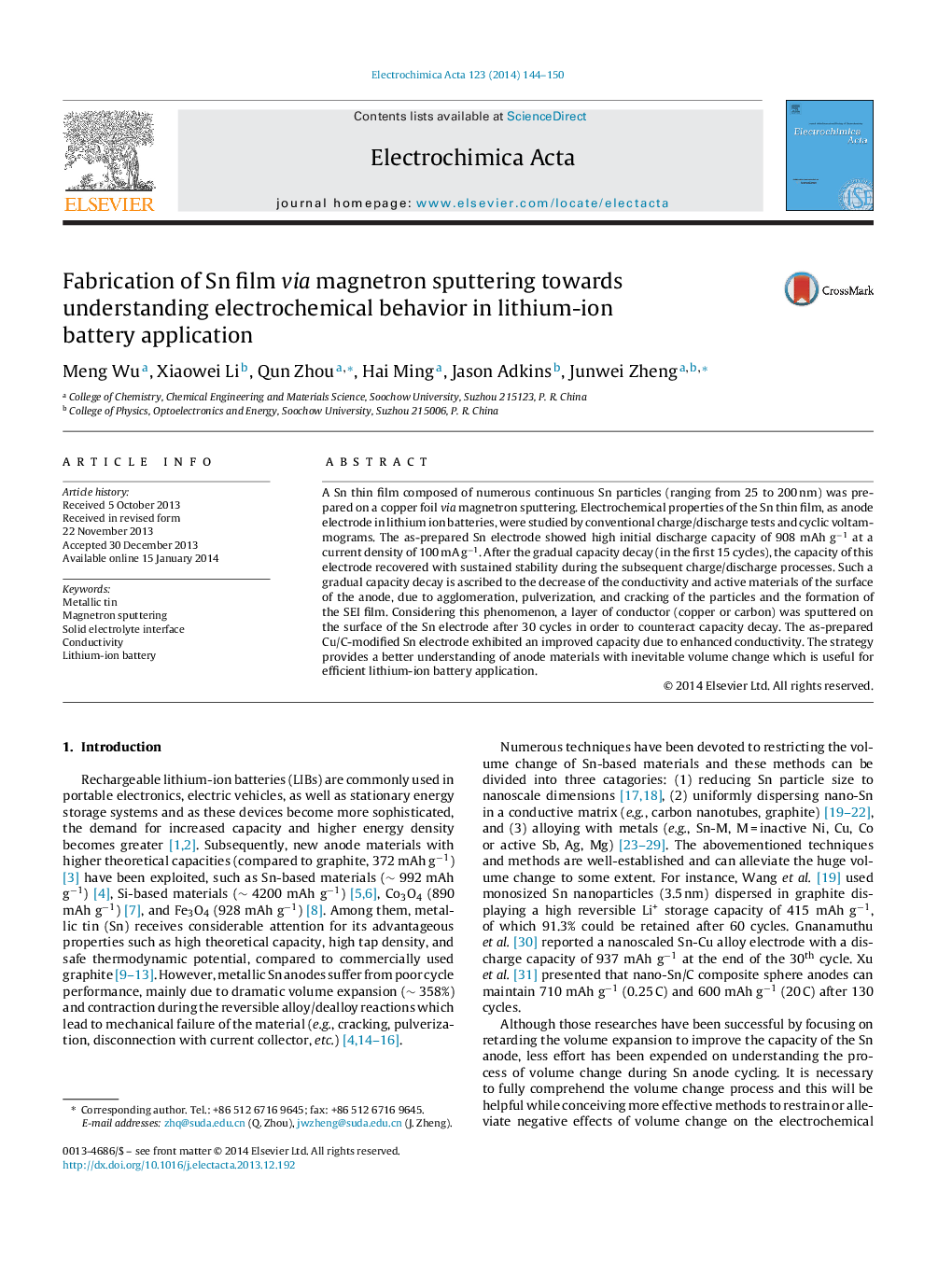| Article ID | Journal | Published Year | Pages | File Type |
|---|---|---|---|---|
| 186003 | Electrochimica Acta | 2014 | 7 Pages |
•An open and continuous Sn film was fabricated by magnetron sputtering.•The Sn film anode was used as a model to investigate the capacity decay.•Sn particles with limited size due to pulverization can provide a stable capacity.•The capacity of Sn electrode can be improved by introducing a conductive layer.
A Sn thin film composed of numerous continuous Sn particles (ranging from 25 to 200 nm) was prepared on a copper foil via magnetron sputtering. Electrochemical properties of the Sn thin film, as anode electrode in lithium ion batteries, were studied by conventional charge/discharge tests and cyclic voltammograms. The as-prepared Sn electrode showed high initial discharge capacity of 908 mAh g−1 at a current density of 100 mA g−1. After the gradual capacity decay (in the first 15 cycles), the capacity of this electrode recovered with sustained stability during the subsequent charge/discharge processes. Such a gradual capacity decay is ascribed to the decrease of the conductivity and active materials of the surface of the anode, due to agglomeration, pulverization, and cracking of the particles and the formation of the SEI film. Considering this phenomenon, a layer of conductor (copper or carbon) was sputtered on the surface of the Sn electrode after 30 cycles in order to counteract capacity decay. The as-prepared Cu/C-modified Sn electrode exhibited an improved capacity due to enhanced conductivity. The strategy provides a better understanding of anode materials with inevitable volume change which is useful for efficient lithium-ion battery application.
